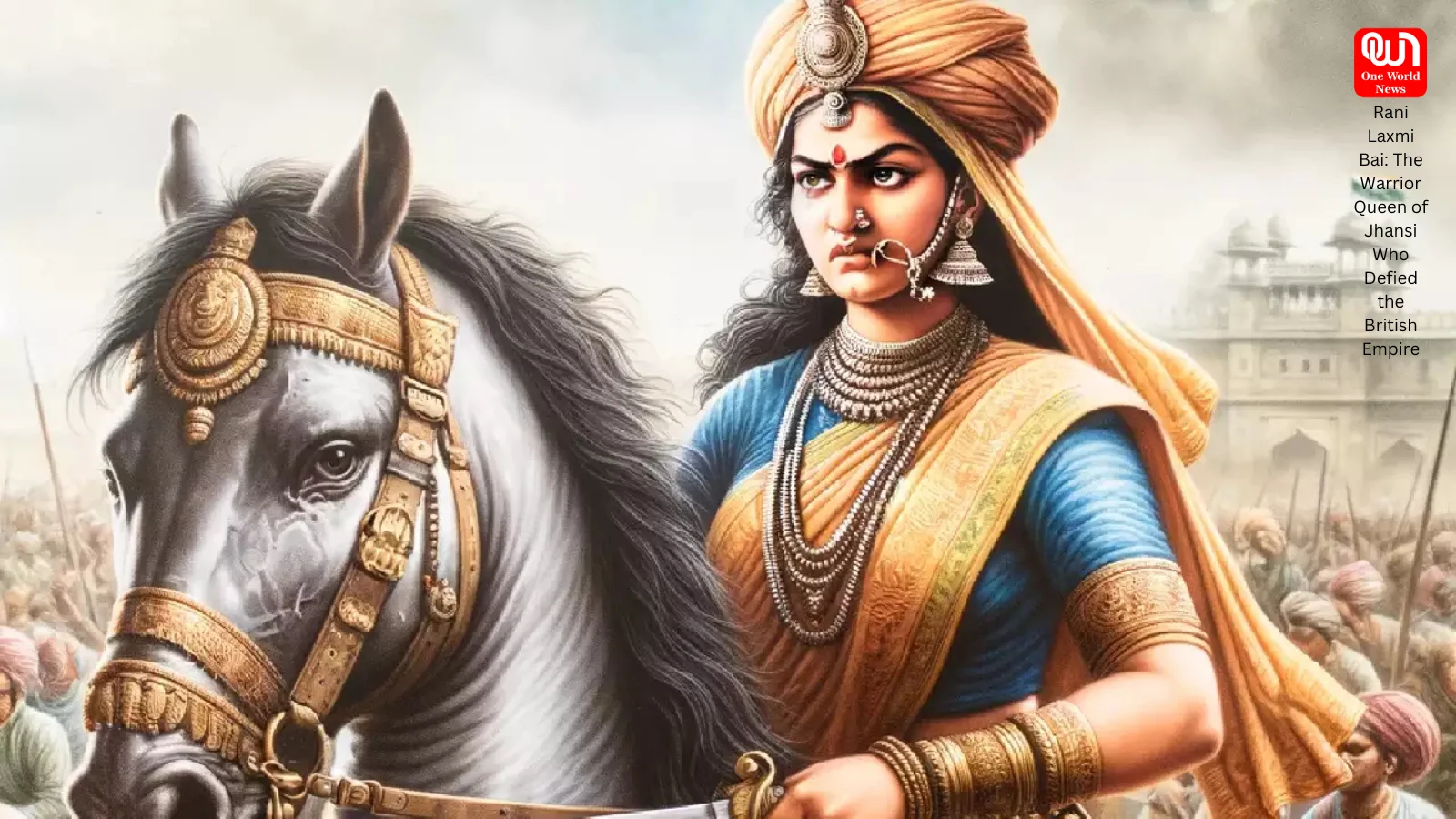Rani Laxmi Bai: The Warrior Queen of Jhansi Who Defied the British Empire
The life of Rani Laxmi Bai, the Warrior Queen of Jhansi, known for her bravery, leadership, and defiance against British rule during the 1857 Indian Rebellion.
Rani Laxmi Bai: The Courageous Warrior Queen of Jhansi Who Fought Against the British Empire During the Indian Rebellion of 1857

This name and she, Rani Laxmi Bai, the queen of Jhansi, echoes courage, valor, and patriotism. Iconic in Indian history, her leadership reigns supreme during the 1857 Indian Rebellion, also known as the First War of Indian Independence. Her story is akin to wars and sacrifices-a testament to the ultimate devotion to one’s country.
She was born on 19 Nov 1828 in Kashi. Her childhood was marked by much suffered past. Her being married to a strong-willed man like Thakur, one who was a hard worker, nurturer, and defender of the weak-served for years as a performing soldier under a good British commander named Colonel Tartar.
Born on 19 November 1828 in the city of Varanasi in India as Manikarnika Tambe, Rani Laxmi Bai was born to a Maratha family and was Moropant Tambe’s daughter. He was an attendant to the court official for the kingdom of Peshwa Baji Rao II. She showed impressive intelligence and keen interest in horse riding, archery, and sword fighting from early age, but were highly uncommon activities for women of that time.
When she was 14 years old, Manikarnika married the Maharaja of Jhansi, Raja Gangadhar Rao; she would subsequently be known hence as Laxmi Bai, which means prosperity and fortune. This marriage brought her into the borders of Jhansi state where in later life, she would get portrayed as an icon of resistance and bravery.
Loss and Claiming to the Throne
When Raja Gangadhar Rao, Laxmi Bai’s husband, died on January 21, 1853, after 17 years of marriage, the Maharaja died without an heir. His death created a grave crisis in the kingdom. The British East India Company, which was still operating under the doctrine of lapse, claimed to annex Jhansi, alleging that there was no natural successor to the throne. The queen, however, was eager to not let the British take possession of her kingdom.
She adopted a son, Damodar Rao, to ensure the succession of the throne to her adopted heir. However, the British would not recognize this succession and used the doctrine of lapse to annex the state. This became a very motivating factor for the Queen’s defiance towards the British.
Battle of Jhansi-A Lethal Resistance
Rani Laxmi Bai played an active part in the defense of her kingdom when the Indian Rebellion of 1857 started. Jhansi was one of the key centers of this uprising; under the leadership of Laxmi Bai, it turned into a beacon of resistance.
In the month of March 1858, British troops that were headed by Sir Hugh Rose laid a siege to Jhansi. Laxmi Bai had been offering brave and tactical command to her soldiers despite having significant numbers against her. The Queen fought bravely, even going to war, riding into battle with a sword and leading her forces from the front. She even wore the traditional soldier’s dress for her full determination to defend her land.
The battle continued for weeks, but the British superiority in numbers and artillery eventually prevailed over the defenders. However, Laxmi Bai’s undying spirit and role as a leader continued to inspire revolutionaries.
The Last Escapade and the Last Battle
Not long after the fall of Jhansi, Rani Laxmi Bai did not surrender to the British. Narrowly escaping from the fort on horseback with her adopted son, she rode over to the town of Kalpi, not far from Jhansi, and joined forces with other freedom fighters, Tatya Tope, and other leaders of the rebellion in continuing the war against the British.
Read more: Measure to Digital Detox Yourself : Reclaiming Mental Health
This was to prove to be her last stand, as she fought valiantly at the Battle of Gwalior in June 1858. The Queen and her troops fought valiantly against the British. Unfortunately, during this battle, Rani Laxmi Bai received injuries. As the British forces closed in, the valiant Queen mounted her horse once more, which was her last gallant act. On June 18, 1858, a British bullet hit her fatally, and she died on the battlefield.
Legacy of Rani Laxmi Bai
The life and death of Rani Laxmi Bai became the epitomization of the resistance of Indians against colonial rule. Her bold leadership and commitment to protecting her people, even at the cost of great odds against her, made her a legendary “Warrior Queen” of Jhansi. Although she did not live to see the outcome of the revolt of 1857, her work was etched indelibly into the annals of India’s freedom struggle history.
Today, she is remembered as one of the greatest heroines in Indian history in the eyes of present Indian citizens. She inspires not only all the women but also all Indians due to her great courage, patriotism, and leadership with the reminder of sacrifices made to win freedom.
We’re now on WhatsApp. Click to join.
Like this post?
Register at One World News to never miss out on videos, celeb interviews, and best reads.








